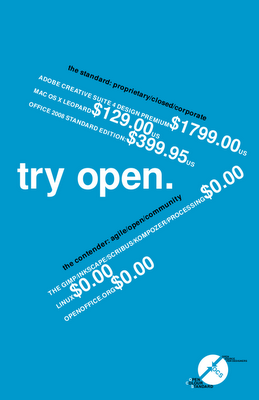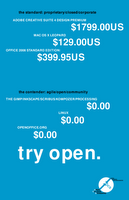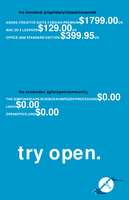"play is the most economically efficient mode of creative work." (
Raymond, 1997)
In his 1998 essay, "
Homesteading the Noosphere," Eric Raymond outlines several different management structures used in Open Source projects. These structures are:
- sole maintainer
- multiple maintainers under one benevolent dictator
- democracy with developers as voting members
- rotating dictatorship among senior developers
In the Open Source community, the term "benevolent dictator" refers to the leader/overseer of a project. The benevolent dictator effectively acts as a gatekeeper for the project, providing vision and oversight. The most notable example of a benevolent dictator is Linus Torvalds, who safeguards the integrity of the Linux kernel. A maintainer is less managerial and more technical. Instead of dealing with the vision of a project, in models with both dictators and maintainers, maintainers are tasked with responsibility over one section of the project. In a model that has both maintainers and a benevolent dictator, multiple maintainers work under the benevolent dictator at individual tasks with the goal of fulfilling the vision as set out by the benevolent dictator.
Important factors in community building around software development, according to Raymond, are having "something runnable and testable to play with" (
1997) to offer your contributors, as well as having a "plausible promise" (
1997).
Worth quoting in full, on the topic of what contiributors like to do: "Human beings generally take pleasure in a task when it falls in a sort of optimal-challenge zone; not so easy as to be boring, not too hard to achieve. A happy programmer is one who is neither underutilized nor weighed down with ill-formulated goals and stressful process friction. Enjoyment predicts efficiency" (
1997).
Labels: open source









